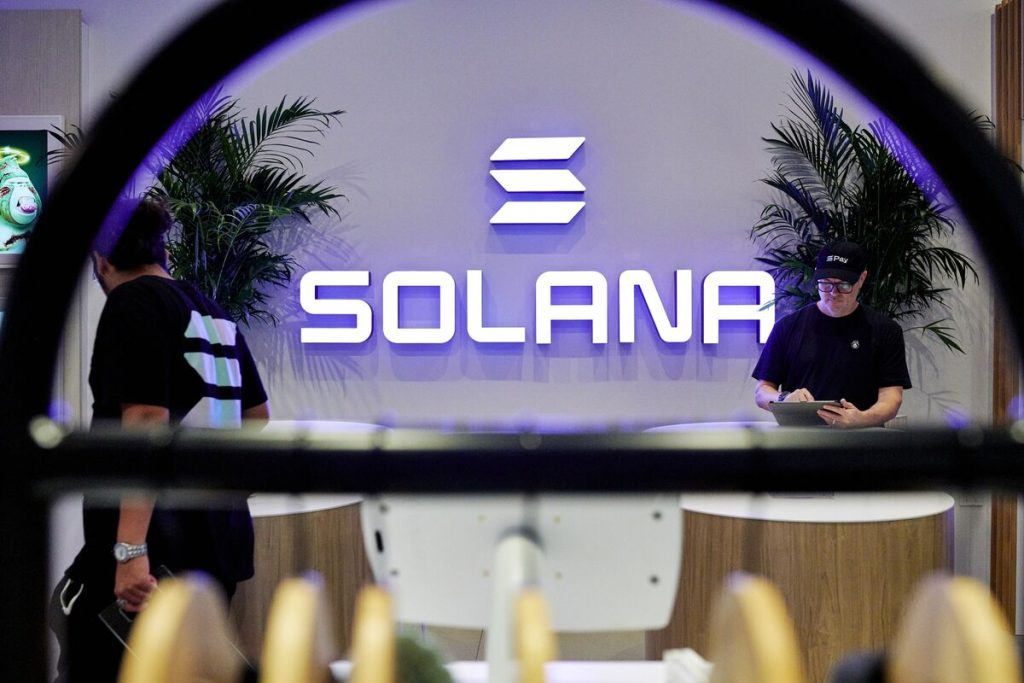SOL 101 – Everything You Need To Know About Solana
Reading Time: 7 minutes
Imagine this…
You and your friends are chilling in the beautiful city of Solana Beach — a hidden treasure on the northern coast of San Diego, California.

As you enjoy the city’s relaxing nature, someone suggests naming an ongoing crypto project after the city. Sounds strange at first, but after saying it out loud a couple of times, it sounds just right.
You can come off the imagination now (don’t let it wound you). This is actually a true life story.
In this article, you’ll discover all there is to know about the Solana coin (SOL) — a crypto project named after a city.
Let’s jump right into it!
About SOLANA
Solana came to life when Anatoly Yakovenko — a software developer, attempted to solve Ethereum’s scalability issues.
After noticing several loopholes within the Ethereum network, Yakovenko proposed the Solana blockchain network.
Solana is a high-performance blockchain platform that provides fast, secure, and scalable decentralized applications (dApps) and cryptocurrency transactions.
Often referred to as Ethereum on steroids, SOL is the native token of the Solana blockchain network. It can be used as:
- A medium of exchange
- To settle transaction fees
- To secure the network through staking
Using SOL: How Does it Work?
Just like any other cryptocurrency, Solana has some unique mechanisms. If you want to discover how Solana works, keep reading.
The Solana Blockchain Network
The aim of a blockchain network is to provide transparent transactions among users, without the need for a centralized authority.
This means that no single authority has control over the network.
Instead, users have to come to an agreement before validating transactions. This is done through consensus mechanisms like Proof of Stake, Proof of Work, or Proof of History (more on that later).
SOL has its own blockchain network, which allows people to make crypto transactions and build decentralized applications (dApps). The network is highly secure, and it supports several transactions per second.
Proof of History
Proof of History (PoH) is a unique timekeeping mechanism that automates the confirmation of transactions on the Solana blockchain network. It acts as a cryptographic clock that keeps track of historical events.
A major scalability constraint in blockchains like Bitcoin and Ethereum was the time required to reach a consensus on validating transactions.
Hence, Yakovenko devised PoH to automate the confirmation process for blockchains — to increase transaction times.
SOL Mining and Transactions
Solana this, Solana that. But then, how is Solana created?

Unlike Bitcoin or Ethereum, Solana cannot be mined.
Mining is often done through a Proof of Work consensus mechanism, where validators solve complex mathematical problems. However, Solana doesn’t utilize this mechanism. It uses Tower Byzantine Fault Tolerance (BFT), Proof of Stake, and Proof of History (PoW).
Instead, you can get Solana through delegation (or staking). This process allows token users to stake their SOL to validators involved in the consensus process. Users then receive rewards based on how much SOL they delegate. This process also helps to tighten the security of the Solana network.
You can also earn SOL as a validator. However, you’ll need to hold a certain amount of Solana and have the required hardware and software to participate in the consensus process.
Solana Explorers
Being open-source and decentralized, you can actively see what’s happening in the Solana blockchain network. This is possible with a Solana explorer, which allows users to have real-time access to details and information like:
- Token details
- Network metrics
- Block confirmation statistics
- Solana addresses and accounts
- Transaction fees and timestamps
…and other activities on various Solana clusters.
Other types of Solana explorers include:
- Soscan
- Unmarshal
- SolanaFM
- Solana Beach
Investing in SOL: What Should You Know?

SOL is a cryptocurrency making waves outside of being a mere digital currency. It has proved useful in helping financial institutions and other corporate entities.
If you’re looking to invest in Solana, you might be interested in how to buy, sell, and the risks or benefits involved.
In this section, we’ll dive into all you should know about investing in SOL.
How to Buy SOL in 4 Simple Steps
You can buy SOL on any crypto exchange platform that lists and supports its trading. Here’s a detailed guide on how to buy SOL.
P.S: Start by first determining how much you’re comfortable investing in SOL. Only invest an amount you’re willing to lose or that you don’t depend on.
1. Set up your crypto account
Choose your preferred (and reputable) exchange platform that supports SOL trading. Popular platforms include Binance, Kraken, BitFinex, and Coinbase.
2. Fund your account
You need to buy SOL with fiat or any existing cryptocurrency that you have. Most crypto exchange platforms accept local fiat and other cryptocurrencies. If buying with fiat, fund your account, then proceed to the next stage.
3. Buy SOL
After funding your account, navigate to the market or trading section and search for SOL.
If you use p2p on the crypto exchange, navigate to the p2p market section and search for SOL. But if you’re buying directly from the platform, search for the SOL trading pair instead. Popular pairs include. SOL/BTC, SOL/USDT, SOL/ETH, etc.
Then place a market order (buying at the current market price) or a limit order (setting your desired price).
Make sure you re-confirm your order before smashing the buy button.
4. Store your SOL
Voila! Once you’ve bought SOL, it will be deposited into your SOL wallet on the platform. However, you can leave it on the platform or transfer it to a more secure SOL wallet.
How to Sell SOL in 4 Simple Steps
Want to sell your soul SOL for some bucks? We’ve got you covered.
Like the buying process, you can sell through p2p or the crypto platform itself.
However, if you plan to sell on another platform different from where you hold the SOL, you have to transfer the SOL to the platform’s SOL wallet.
Here’s a step-by-step guide:

1. Choose A Reputable Crypto Exchange
Unless you plan to sell your SOL to a trusted friend, you’ll need a crypto exchange platform to sell your SOL.
2. Connect Your Fiat Bank Account
If you aren’t selling for fiat, skip this step.
However, if you’re selling your SOL for fiat, you must connect a fiat account to receive fiat. But if you’re selling through p2p, you can send the buyer your fiat bank account details.
3. Sell Your SOL for Fiat
If selling directly to the crypto exchange, navigate to the “market” or “sell section” to sell SOL for your preferred currency.
To avoid stories that touch, re-confirm the exact amount you want to sell, and review the order details.
If selling via p2p, navigate to the p2p section and place a sell order.
4. Withdraw your Funds
Once your sell order is processed, withdraw your fiat into your preferred bank account or fiat wallet (if the crypto platform comes with one).
P.S: These steps are general guidelines, and the exact steps may differ from platform to platform.
Investing in SOL: The Pros and Cons
Want to start investing in SOL? Here are the pros and cons to weigh.

Pros of Investing in SOL
-
Growing adoption
Solana has witnessed significant growth and adoption since its inception.
An increasing number of projects and dApps are being built on its network. This robust, growing ecosystem poses a lucrative opportunity for investors and users, with huge potential for increased liquidity and innovation.
-
Fast transaction times
Solana is popular for its fast transaction processing time.
Solana takes less time to validate and execute transactions thanks to its hybrid protocol. Its blockchain can process up to 51,000 to 64,000 transactions per second — a major advantage for financial institutions incorporating the Solana network.
-
Low transaction fees
As fast as the Solana network is, you don’t have to pay an arm and a leg for transaction fees, compared to a platform like Ethereum’s. The average transaction costs $0.00025, which makes Solana one of the most affordable blockchain networks.
-
Scalability
Solana is renowned for its high scalability, validating thousands of transactions per second. With this, developers won’t have to worry about building Defi applications that require lightning-fast transaction processing.
Investing in Solana is pretty lucrative for companies that build Defi applications.
Cons of Investing in SOL
-
Dependency on Validators
Solana adopts a delegated proof-of-stake (DPoS) consensus process, where token holders delegate their tokens to validators.
While this consensus mechanism is good, it relies on validators’ active participation and integrity— which can prove risky.
If many validators leave the system, act maliciously, or stop fulfilling their responsibilities, Solana’s security and reliability will be impacted.
-
Network Reliance
Using and investing in Solana involves relying on the network’s technical infrastructure.
Although Solana’s architecture is robust, there is still some risk of technical glitches, network vulnerabilities, and disruption. Such an occurrence can impact the security and functionality of the Solana network.
-
Regulatory Uncertainty
Generally, the regulatory landscape surrounding cryptocurrencies and blockchain technology is still evolving. Sudden changes in regulations and laws can impact Solana’s adoption, use, and investment potential.
Conclusion: The Future of SOL
Solana offers a functional blockchain network that is fast, cheap, secure, and scalable.
Without a doubt, Solana’s outstanding features, like speedy transaction times, Proof of History (PoH), and Tower BFT, offer lucrative opportunities to investors, developers, and users alike.
Looking ahead, Solana’s future seems promising.
The Solana network has gained heightened momentum and adoption, with an increasing number of decentralized applications and projects built on it. This growing ecosystem paves the way for further investment, collaboration, and innovation within Solana.
So whether you’re an investor, developer, or user, Solana is worth keeping tabs on. The coin has exciting opportunities to offer!